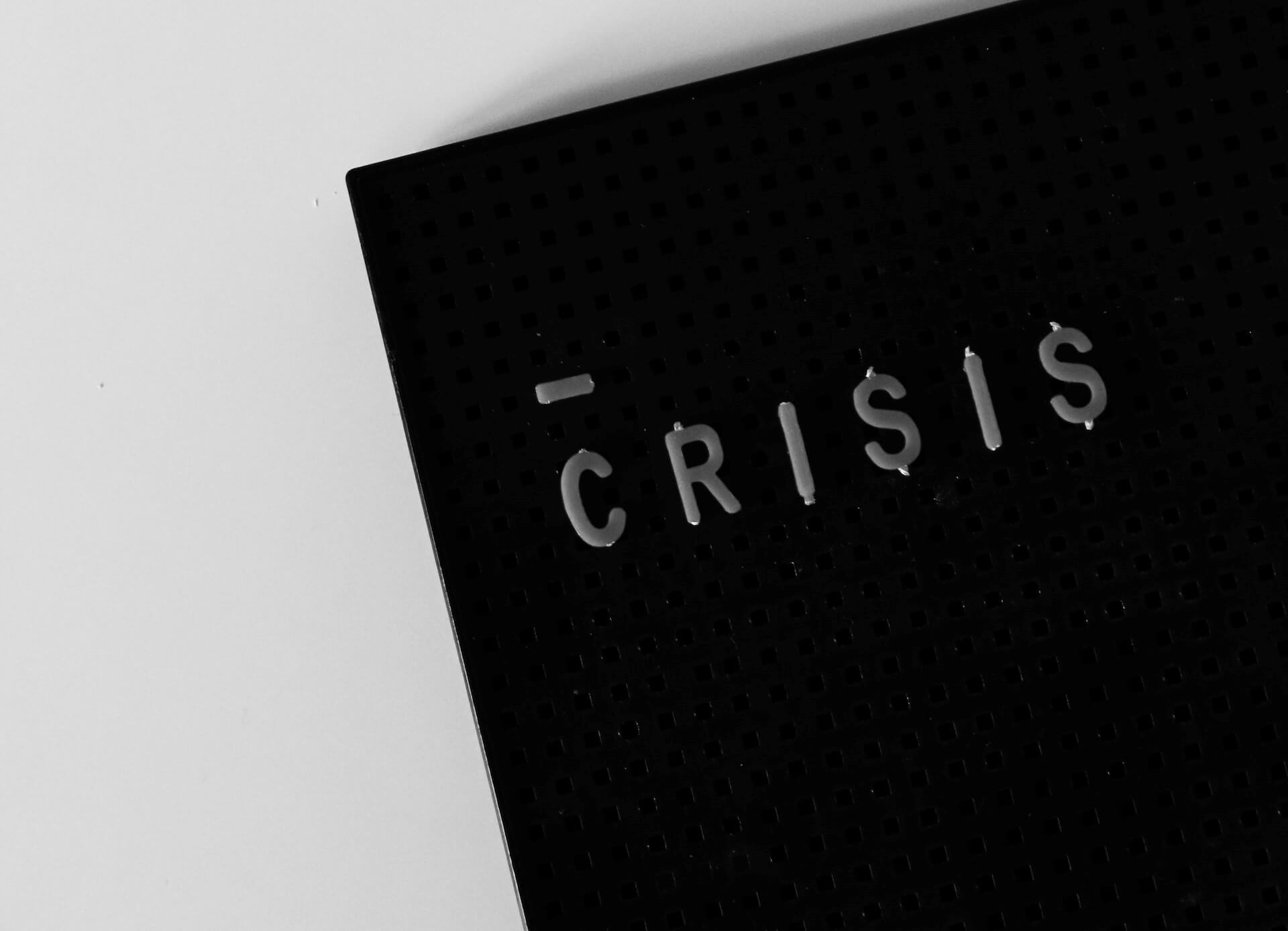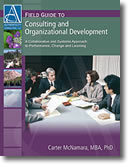Customer Relationship Management: Guidelines and Resources
© Copyright Carter
McNamara, MBA, PhD, Authenticity Consulting, LLC
Although there is a conventional difference between the terms “customer”
and “client,” this topic refers to “customers” as meaning
both. Also, although a product is a tangible offering and a service is an intangible
offering, this topic often refers to “products” as meaning both. The
activities of customer relationship management apply to any type and size of
organization, so the term “organization” refers to that wide variety,
as well. Before reading this topic, you might read about the Relationship
Between Managing Supply Chain, Operations, Quality, Customer Relationships and
Customer Service.
Sections of This Topic Include
Introduction
Suggested Pre-Reading
You Are Probably Doing Some CRM Now, But …
What is a CRM System?
What Are the Main Benefits of a CRM?
Types of CRM Functions
Types of CRM Systems
Planning Your CRM System
Preparation
1. Clarify Organizational Goals and Measures
2. Align CRM Goals With Organizational Goals
3. Clarify How Customers Will Be Treated Differently
4. Decide What Organizational Design Changes Are
Needed?
5. Select the Best CRM Software
Developing Your CRM System
Redesign Your Organization As Needed for CRM
Start Cultivating a CRM Culture
Delegate CRM Goals to Teams and Employees
Train Employees About CRM
Managing Your CRM System
Manage Your CRM Teams and Employees
Manage Your CRM Software
Evaluate Your CRM System
General Resources
Also consider
Customer
Service Management
Operations
Management
Quality Management
Supply
Chain Management
Related Library Topics
INTRODUCTION
Suggested Pre-Reading
Customer Relationship Management (CRM) ensures that the ongoing relationship
between your organization and its customers is always very valuable to everyone
involved. That was easier to do in the past when an organization was expected
to provide a product or service, and the rest was up to the customer.
That has changed dramatically. Today, customers can instantly access opinions
about your organization and its products. Also, they can instantly order products
and services from anyone else around the world.
So before reading the following guidelines and resources in this topic about
CRM, it would be very useful for you to first get some understanding of the
proactive, systematic, high-quality process required to ensure ongoing, great
customer service today.
All About Customer
Service: Overview and Numerous Resources
You Are Probably Doing Some CRM Now, But …
If you work in an organization, then you are probably already involved in some
form of CRM now. This is true whether your organization serves customers who
are internal or external to your organization, or both.
What do you do now to ensure a great ongoing relationships with your various
customers? For example, how do you keep track of information about them? Highlights
from your conversations? Their feedback about your services? Your plans about
serving them into the future? Schedules of when to contact them and what to
say?
For example, do you have a central database that organizes that information?
Do you use spreadsheets with customer information? Do you resort to using the
contacts list in your phones? Are there multiple people involved in serving
customers? If so, then how do you all ensure you are effectively sharing the
right information at the right times? How are you reminded of when to contact
certain customers and for what purpose?
The answers to those kinds of questions comprise some of your activities in
CRM. CRMs can be implemented and utilized in a rather informal, sporadic and
reactive approach. Or, they can be implemented in a proactively planned and
highly integrated approach. If your organization plans to grow and develop to
the next life
cycle, then you are far better off to use the latter approach. Fortunately,
there are many highly practical and affordable guidelines and tools that can
help you.
What is a CRM System?
A system is a recurring cycle of activities, including:
- Planning to determine goals and how they can be achieved, and
- Then developing and managing resources and activities to achieve those goals,
and - Then evaluating whether the goals have been achieved or not, and
- Then using the learning from the evaluation to improve the quality of the
next round of planning.
Thus, a system is a recurring loop of components — in a continuous cycle of
improvement. Customer relationship management is best done as a system; otherwise,
the management tends to be highly reactive and sporadic, often resulting in
a patchwork of disconnected and ineffective activities.
The purpose of a CRM system is to take a recurring, comprehensive and systematic
approach to ensuring a mutually fulfilling relationship between your organization
and all of its customers. The system works with any type and size of organization
that has customers, whether internal, external or both. Here are two additional
perspectives:
- “Customer relationship management (CRM) is the combination of practices,
strategies and technologies that companies use to manage and analyze customer
interactions and data throughout the customer lifecycle, with the goal of
improving customer service relationships and assisting in customer retention
and driving sales growth.” SearchCustomerExperience - “Customer Relationship Management (CRM) in a very broad way can be
defined as the efforts made towards creating, developing, and maintaining
a healthy and long-lasting relationship with the customers using technology.”
TutorialsPoint - “CRM is an organizational strategy, not a software tool — although
software can be used to help the CRM system to work toward its purpose.”
Carter McNamara
The CRM guides and supports customers through the various phases of the customer
relationship phases, as well as the phases in the sales pipeline.
The Three
Phases of CRM
Five
Customer Relationship Stages for Full Engagement
What Are the Main Benefits of a CRM?
The more you understand your customers — their types
and needs,
what they value,
their activities with your organization — then the more likely they will remain
loyal to your organization. Here is a list of some of the overall benefits of
a CRM system:
- You can easily access comprehensive and integrated customer-related information
in one place, rather than sorting through a variety of different channels
and people. - It improves customer communications because you know how they prefer to
communicate, the most recent status of communications with them, and what
their current priorities are. - It increases efficiencies and team work in operations, helping organizations
to evolve through the necessary organizational life cycles. - Overall, you can increase customer satisfaction, loyalty and retention —
ultimately, increasing profits for businesses and community impact for nonprofits.
If yours is a small or medium-sized organization, then you might be mistakenly
thinking that a CRM system is much too complex and expensive for your organization.
If so, then you might benefit from reading this article.
Top
Five Myths About CRM Debunked
Types of CRM Functions
The CRM system works by pulling together information about your customers from
a variety of different sources that you specify in order to automate:
- Marketing, for example, organizing information about each
different group of customers, and then tailoring sales and marketing campaigns
to each (see Marketing) - Sales, for example, analyzing information about each customer
to help them to evolve through the sales pipeline, as well as using CRM for
account and contract management (see Sales) - Customer service, for example, recognizing your different
types of customers, the needs of each and what they value, as well as noticing
their complaints and what has worked to resolve them (see Customer
Service) - Analytics, for example, generating forecasts of likely
demands for certain types of goods and services, as well as what might be
the best pricing structures for them (see Business
Data Analysis) - Collaboration, for example, sharing calendars and project
plans, as well as coordinating common communications across different stakeholders
(see Team Building)
By automating these functions with CRM software, you can organize information
from your documents, notes, phone calls, emails, chats and forums. You can program
some CRM software to monitor certain social media tools to notice comments regarding
your organization and its products and services.
Thus, CRM systems can give you a clear picture of each of your customers to
help you cultivate a strong relationship with each as you support them through
the customer
life cycle.
Types of CRM Systems
When considering which type of CRM system might be best for your organization,
it helps to consider from among three main types including the following. You
will notice that they correspond closely to the above-mentioned types of CRM
functions.
- Operational – This type focuses especially on activities
in sales, marketing and customer service. It also organizes information about
customers, including each individual customer, as well as different groups
of customers. It is the most popular type. - Analytic – This type analyzes information to suggest, for
example, buying patterns of each group of customers as well as their spending
patterns and timing to convert leads to contracts. - Collaborative – This type coordinates the sharing of up-to-date
information among different key personnel and teams, as well as among different
groups of stakeholders, including, for example, suppliers, distributors and
vendors.
CRM
Types
Operational,
Analytical, Collaborative
An Introduction
to Different Types of CRM Systems
What
is CRM? 3 Types of Customer Relationship Management
PLANNING YOUR CRM SYSTEM
Preparation
Understand Problems and Pitfalls to Avoid
in Implementation
Now, before you plan and implement your CRM system, is the best time to consider
the types of problems that can occur — not later on when you are in the middle
of trying to operate the system, while also trying to resolve problems in how
it is operating.
Why CRM Fails
Top 5 CRM
Software Pitfalls
Avoid the
Four Perils of CRM
Why
CRM Projects Fail & How To Avoid These Pitfalls
Top
10 CRM Implementation Pitfalls
Form a CRM Team
The planning and implementation of a CRM system requires sufficient time, energy
and expertise, as well as a variety of different perspectives. That means a
well-qualified and designed CRM Team of the most suitable members from your organization.
The CRM Team would make recommendations to management about, for example:
- Goals for the CRM
- Metrics to measure progress toward the goals
- The best approaches to train employees about CRM
- Criteria to select the best CRM system
- The best CRM system that meets the criteria
It is best to draft a job description for the CRM Team to be used when explaining
the CRM Team’s role to upper management and suggesting who should be on it.
The description also gives guidance and direction to the CRM Team as it is doing
its job.
It is often best, as well, to train the members of the CRM Team about CRM. It might
be useful to hire an expert to do that training, as well as to being a resource
to the CRM Team as it does its job.
How
to Build the Perfect CRM Implementation Team
How
To Structure Your CRM Implementation Team
5 Important People
You Absolutely Need for CRM Success
Also see
Hiring
Consultants
Team
Building
Team
Performance Management
Understand the CRM Planning
Process
Here are some excellent articles that can give you and your CRM Team a good impression
of what is generally involved in planning and developing your CRM system. You
might read them in this order from general to more specific:
Top
4 CRM Implementation Considerations
How to Complete
a CRM Implementation in 5 Steps
How
to Create a CRM Strategy in 7 Steps
1. Clarify Organizational Goals and
Measures
What are the organization’s overall goals regarding its sales, customers and
service? For example, are they to increase sales revenue, expand marketshare,
increase customer retention and/or reduce customer complaints? What is your
unique
value proposition to sell your products and services to different groups
of customers? What is your unique
selling proposition that separates you from your customers?
Strategic Planning
How to Do to Planning
Goals
and Objectives Should Be SMARTER
2. Align CRM Goals With Organizational Organizational
Goals
Define the CRM goals needed to help achieve the strategic goals. For example,
should you focus more efforts on various preferred groups of customers, such
as the most profitable customers, new customers, current customers and/or reducing
their complaints? As much as possible, associate the necessary SMART
objectives needed to implement each CRM goal. It is helpful to articulate a
fictional customer profile, or persona,
to most easily consider the nature of each group of customers.
When deciding CRM goals, it is often useful to consider various metrics, or
measures of progress, for a CRM system. The metrics themselves can become goals
to achieve.
The
CRM Metrics: How to Measure the Performance of CRM
How
to Measure CRM Success
CRM
Metrics: What Should You Monitor and Measure?
Also see
Action
Planning and Operational Planning
Strategic
Action Plans & Alignment
3.Clarify How Customers Will Be
Treated Differently
How can you best evolve each preferred group through the sales pipeline, while
maintaining strong customer relationships and services? For example, should
you sell directly to them or use a distributor? For each group, should you start
or enhance a call center, up-sell or cross-sell, focus on certain types of discounts
and/or improve quality management? Also, what are the most appropriate communications
channels for each preferred group?
All About Sales
How to Work With Others
4. Decide What Organizational
Design Changes Are Needed?
A conventional rule in deciding the structure of something is “form follows
function.” In other words, the structure of the organization (its design
and roles) should be to what is most useful in implementing the organization’s
functions (its goals and methods to achieve those goals).
So what departments, teams and employees are now — and should be — involved
in dealing with customers, for examples, sales, marketing and customer service?
What roles are now — and should be — involved in using the CRM system, including
its software? What goals should each department, team and various employees
have in customer relationship management? What SMART objectives should be associated
with each goal?
Organizational
Structures and Design
Requirements
for Successful Organizational Change
5. Select the Best CRM Software
What Type of Software Platform is Best?
On-premises
In this type, you install the CRM software on your computer system, as well
as maintaining, troubleshooting and updating the software. You would either
use one of the free CRM tools (listed later on below) or buy or license a tool
from a vendor.
This type of software installation works best if you have available ongoing
technical skills for installation, troubleshooting and upgrades. You also will
need considerably more time to install the software as you climb the often steep
learning curve to understand the software and its installation. You are likely
to face occasional periods of downtime of the software as problems are solved
and upgrades are installed.
Cloud-based
In this type, you subscribe or license the software from a vendor that makes
the software available to one or more people in your organization, depending
on the licensing agreement. The vendor manages all aspects of the software,
including installation, testing, training, troubleshooting and upgrades. This
works if you have a suitable budget. Fortunately, the price of CRM software
has continued to decrease over the years.
How to Select the Right CRM Software
Questions to Consider When Specifying Your Software Requirements
Itarian
lists a variety of questions to consider, including:
- Is it suitable for your size of organization?
- Are there any limitations to the number of users?
- Is it easy to use?
- Can it be integrated with your other computer systems?
- Is it easy to integrate with other customer service solutions that you already
use? - What are its security features against hackers’ attacks?
- Is the software affordable and fits in your budget?
You should also consider:
- What type of CRM software do you need? (See Types of CRM
Systems) - What type of technical support does the vendor provide? How reliable is
it? - Does the vendor provide training?
- Does the vendor include a careful manual for implementing the software?
- Does the vendor provide demonstrations that your employees can experience?
- What are some of its customers saying about the software?
Specify the Requirements for the Software
Now you are ready to specify what you want the CRM software to accomplish for
you. It is best to write a software requirements specification (SRS), while
focusing now on the needs of your organization, and not on the particular software
tool that you might already prefer. Later on, you will take your SRS to the
various CRM software vendors for you to carefully decide if their software will
indeed meet your organization’s needs.
How
to Create an SRS for CRM
CRM Software
Requirements for Your Business
How
to Define Your CRM Software Requirements
CRM
Requirements Example Document
Five
Levels of CRM Requirements
Specify
Your CRM Requirements
Lists of Some CRM Software and Costs to Consider
Free CRM Software
7 Best Free and
Open Source CRM Software Options
How
Can You Use Gmail as CRM Tool?
Evernote
The Free CRM With Something
for Everyone
Best Free CRM Software
for Business in 2019
Free CRM for Small Business
Fee-Based Software
CRM Software
Best CRM Software
2019: Comparison & Reviews
The 25 Best CRM Apps
for Every Business
CRM Tools
Customer
Relationship Management Software
For Small Organizations
“Most of the businesses out there will choose a CRM software to measure
the performance of their strategy. The good news in selecting a CRM Software,
is most of the complexity has been taken out of the process now. The best CRM
software solutions include SaaS (software as a service delivered online), and
innovations in this area improve everyday. This means there is no longer a costly
need of an in-house IT team and server space. At least this will be the case
for 97% of all businesses with less than 10 employees.” Thinkaboutcrm
For Nonprofits
Nonprofits can also use CRM software, for example, for tracking clients, program
outcomes, funders, results of fundraising, volunteers, memberships and their
membership levels.
How to
Choose the Best CRM for Your Nonprofit
6
Awesome Nonprofit CRM Options for Your Organization
Top
Nonprofit CRM Software
Now Select the Best Software For Your Needs
You are in a great position now to begin working with various vendors to get
the best software to meet your needs, as specified in your SRS. You might include
your specification in an overall Request for Proposal (RFP). You also might
bring the members of your Implementation Team with you when talking to the vendors.
Your
Definitive CRM Selection Guide and Checklist
How
to Choose Customer Relationship Management (CRM) Software
Choosing
CRM Software
23
Tips for Choosing the Right CRM Software
A
Step-By-Step Guide To Selecting The Right CRM Software
CRM
Vendor Evaluation Matrix
A
CRM Evaluation Checklist: What Should You Look For?
A
CRM RFP Guide and Template for Creating the Perfect Proposal
Also see
4
Reasons Business Contracts Fall Apart
US
Business Contracts
DEVELOPING YOUR CRM SYSTEM
Redesign Your Organization As Needed
for CRM
Consider the goals and objectives that you established during the CRM planning
for each department, team and employee associated with customer relationship
management. What teams and roles should exist? How should they be integrated
with each other? For example, which departments, teams and employees should
be collaborating with each other and how? What organizational design would best
facilitate that type of involvement and collaboration?
Understanding Organizational
Structures and Design
Work
Design and Job Design
Organizing
or Reorganizing an Organization and Its Employees
How to Know What
Positions and Jobs Are Needed
Start Cultivating a CRM Culture
Research shows that long-lasting, successful change in an organization usually
requires a change in its culture. Unless the culture begins to change, it does
not matter how much advice and many tools that the organization gets. A change
in culture will determine whether they are actually used or not.
Great customer relationship management is a mindset. It is a way of thinking,
prioritizing and planning about customer relations in an organization. It guides
how decisions are made and how problems are solved regarding customer relations.
When many people in an organization have that mindset, then the organization
has a CRM culture.
CRM
Culture – How to Bring CRM Culture Successfully?
10
Steps to Implementing a CRM Culture in the Organization
Creating
a CRM Culture
Also see
Cultural
Change
Planning
Team Building
Delegate CRM Goals to Teams and Employees
Consider the CRM goals and associated objectives that you decided during the
planning. Which goals should be delegated to which teams and employees? Make
sure that you make the assignments according to the team performance management
and employee performance management practices that are formally established
in your personnel policies.
Goal
Setting with Employees — What Should Employees Work On?
Team
Performance Management: Performance Planning Phase (Assigning Goals)
Also see
Personnel
Policies
Train Employees About CRM
It is critical that all employees have a mindset of great customer relationships,
especially as a result of having great relationships with customers. The relationship
requires skills customer service, including in building
trust, having empathy
for others, listening,
asking thoughtful questions
and sharing feedback.
Training also includes how to use the CRM software, for example, its purpose,
how to use it, how it integrates with other computer systems, and where to get
help. Good CRM software should come with ample documentation about how to use
it. If you licensed or bought the software, the vendor will very likely have
time-tested training and materials to use.
Keep
It Simple: Training New Employees on the CRM System
How
to Train Your Staff for CRM
The Importance
of Training in CRM Success
Also see
About
Training and Development
Also see
Cultural
Change
Planning
Team Building
MANAGING YOUR CRM SYSTEM
Manage Your CRM
Teams and Employees
You have already done the phases of setting goals and delegating them to the
appropriate teams and employees. Remaining tasks are to monitor and measure
progress toward those goals, implement performance improvement methods where
needed, and reward/compensate teams and employees accordingly.
For teams:
Team
Performance Management: Performance Appraisal / Evaluation
Team
Performance Management: Development (Improvement) Planning Phase
For employees:
Giving
and Receiving Feedback
Evaluating
Performance (Performance Appraisals)
Rewarding
Performance
Addressing
Performance Problems
Performance
Improvement/Development Plans
Firing
Employees
Ensure all necessary collaborations are occurring among teams and stakeholders,
for example, cross-collaboration between marketing, sales and customer service
activities.
Monitor and evaluate the achievement of team and employee CRM-related goals,
and report the progress toward achieving the organizational and CRM goals.
Also see
What
is Supervision? How Do I Supervise?
Manage Your CRM
Software
The management activities specific to the CRM system include, for example to:
- Develop useful written procedures about managing and using the CRM system.
- Ensure all necessary employees continue to effectively use the CRM software
— that is, they are indeed adopting the CRM system. - Update the content in the CRM software, for example, adding and modifying
current contents from the functions of marketing, sales and customer services. - Manage the CRM software, for example, doing backups and upgrading the versions
as necessary.
Evaluate Your CRM System
Evaluations should monitor various metrics, or measures, to decide how well
the CRM system is operating. (Various metrics were listed above in the section
2. Align CRM Goals With Organizational Goals .)
Evaluations should especially be in regard to measuring the extent of achievement
of the CRM goals that you had established for your customer service management
system.
Be sure to use the learning from your evaluation activities to improve the
next round of the planning of your CRM system. In that way, you are indeed treating
your CRM as a recurring system of integrated and tightly aligned activities.
Also see
How
to Design Successful Evaluation and Assessment Plans
General Resources
Glossaries
CRM Glossary
CRM Definitions and Glossary
Organizations
Customer Service Institute of America
International Customer Service Association
National Customer Service Association
North
American Customer Service Management Association
SOCAP International
Learn More in the Library’s Blog Related to Customer Service and Satisfaction
In addition to the articles on this current page, also see the following blog
that has posts related to Customer Service and Satisfaction. Scan down the blog’s
page to see various posts. Also see the section “Recent Blog Posts”
in the sidebar of the blog or click on “next” near the bottom of a
post in the blog. The blog also links to numerous free related resources.
Library’s
Customer Service Blog
For the Category of Customer Service and Satisfaction:
To round out your knowledge of this Library topic, you may
want to review some related topics, available from the link below.
Each of the related topics includes free, online resources.
Also, scan the Recommended Books listed below. They have been
selected for their relevance and highly practical nature.











